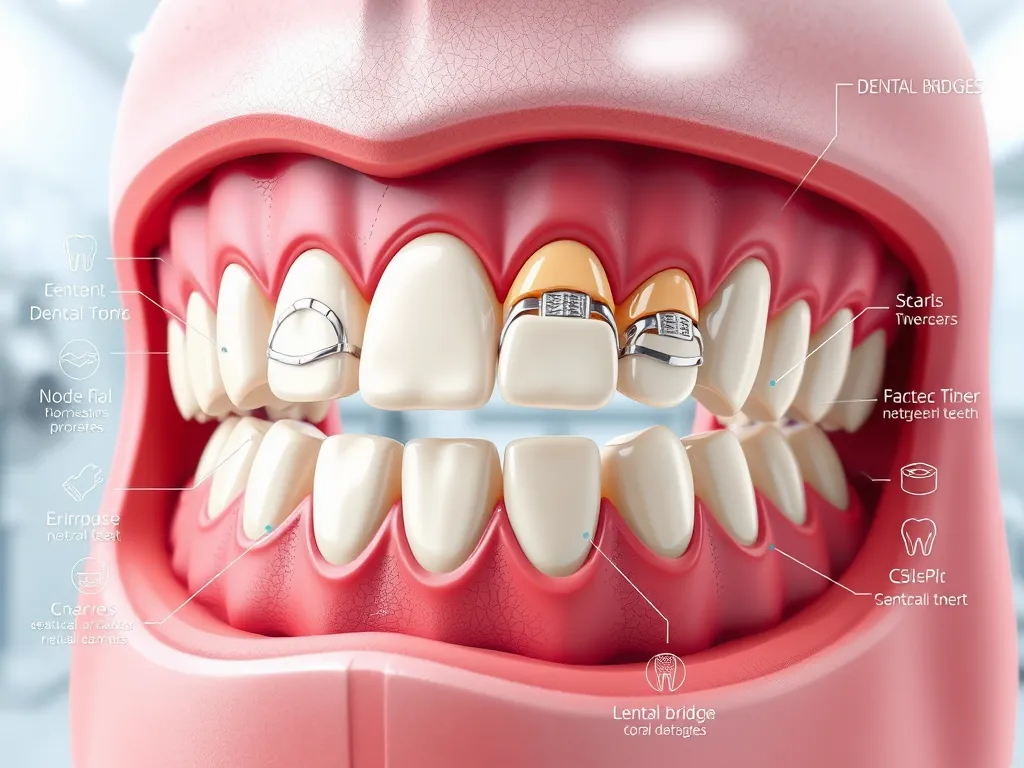Dental Bridges: A Comprehensive Overview


Dental Bridges: A Comprehensive Overview
Dental Bridges: A Comprehensive Overview
In the world of dentistry, dental bridges have been a crucial solution for replacing missing teeth . With advancements in technology and materials, these dental devices have become more durable, comfortable, and aesthetically appealing. In this article, we will provide a detailed overview of dental bridges, discuss their relevance in today's world, and predict their future trajectory.
What are Dental Bridges?
Dental bridges, also known as fixed partial dentures, are dental prosthetics used to replace one or several missing teeth. They consist of an artificial tooth or teeth (pontic) that are held in place by anchoring to the adjacent natural teeth or dental implants. The natural teeth or implants that support the bridge are called abutments. If this was up your alley, you might appreciate colored fillings 1
Types of Dental Bridges
There are several types of dental bridges available, depending on the specific requirements and condition of the patient:
Traditional Dental Bridges : These bridges are the most common type and involve the use of dental crowns on the adjacent teeth to support the artificial tooth in between.
Cantilever Dental Bridges: This type of bridge is utilized when there is only one adjacent tooth available to support the artificial tooth.
Maryland Dental Bridges: Also known as resin-bonded bridges, these consist of metal or porcelain wings attached to the back of adjacent teeth to hold the artificial tooth in place.
Implant-supported Dental Bridges : In cases where multiple teeth are missing, dental implants are used as anchors to support the bridge securely.
Relevance of Dental Bridges in Today's World
Dental bridges continue to be an essential solution for replacing missing teeth due to various reasons: If this was to your liking, you might also be interested in why tooth colored fillings are the healthy choice
Aesthetics: Dental bridges are designed to blend seamlessly with the natural teeth, offering a natural appearance that enhances the patient's smile and facial aesthetics.
Restored Function: By replacing missing teeth, dental bridges enable patients to regain their ability to bite, chew, and speak properly, improving overall oral function and comfort.
Preservation of Oral Health: When a tooth is missing, the adjacent teeth may shift and cause bite problems, gum disease, or temporomandibular joint (TMJ) disorders. Dental bridges prevent these issues by maintaining proper tooth alignment.
Improved Confidence: Dental bridges provide patients with a restored and confident smile, boosting their self-esteem and overall quality of life.
The Future of Dental Bridges
As technology continues to advance, the future of dental bridges looks promising. Here are some potential developments to expect:
Enhanced Materials: The materials used in dental bridges are continuously evolving. In the future, we can anticipate the introduction of stronger, more durable, and biocompatible materials, such as zirconia, which offers excellent aesthetic results.
CAD/CAM Technology: Computer-aided design and computer-aided manufacturing (CAD/CAM) technology have already revolutionized dentistry. In the future, CAD/CAM technology will enable more precise and efficient fabrication of dental bridges, resulting in better fitting and longer-lasting prosthetics.
3D Printing: The emerging field of 3D printing may play a significant role in the fabrication of dental bridges. This technology has the potential to offer customized and patient-specific bridges with improved accuracy and reduced production time.
Integration with Implant Dentistry: As dental implants gain popularity, the integration of dental bridges with implant-supported restorations will likely increase. Advanced techniques and materials will allow for seamless combinations of implants and dental bridges, providing superior stability and longevity.
In conclusion, dental bridges have been and will continue to be an essential solution for replacing missing teeth. Their relevance in today's world is undeniable, offering improved aesthetics, functionality, and oral health. With ongoing advancements in materials and technology, the future of dental bridges looks bright, promising even better outcomes for patients in terms of durability, accuracy, and integration with other dental treatments.
Related Links
Why Tooth Colored Fillings Are the Healthy ChoiceColored Fillings